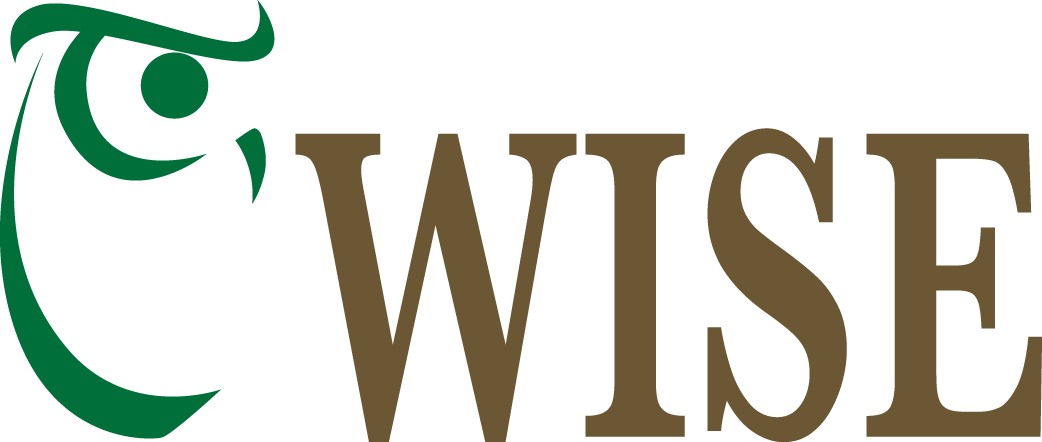|
By Janelle Eklund
One hundred thirty two 4th, 5th and 6th graders attended the fifth annual Wrangell Institute for Science and Environment Earth Discovery Day on May 2nd. Thanks goes again to Wrangell St. Elias National Park and Preserve for hosting this annual event. Park superintendent, Meg Jensen, opened the day by welcoming students, teachers, parent chaperones, and volunteers. Students came from Copper River School District, Mentasta, SAPA, and Home School. Fourth grade stations were taught by Arlene Rosenkrans and Andrea Hand from Resource Conservation and Development: “Don’t Dunk the Junk”; Ted Hesser from SAPA, Planetarium; Cory Schwanke from Alaska Dept. of Fish and Game, How Old is that Fish; and Karen Ottenbreit, Bird Treatment and Learning Center: Raptors, Hunters of the Sky with a Merlin Falcon. Fifth grade stations were taught by Jessica Denny and Chantelle Pence, Mt. Sanford Tribal Consortium: Living Earth; Marnie Graham, Joe Hart, Adriane Honerlaw from Bureau of Land Management: “Where’s Waldo?” Map and Compass; Dave Wellman from WISE: Stories in Rock Crystals; Tom and Kelly Vandenberg, National Park Service: Name that Tune (bird call ID). Sixth grade stations were taught by Mike Trimmer, Ak. Dept. of Forestry: Tree ID and Leaf Hunt Relay; Glenn Hart, National Park Service & Janelle Eklund, WISE: Leave No Trace; Doug Vollman, Kenny Lake Soil & Water Conservation District: Watershed/Enviroscape; DeAnn Sabol, Bird Treatment and Learning Center, Corvid Caching and Classification, Raven. Teachers were given the standards that applied to each station and students were graded from the questions they answered in their “Passport” journals. Student comments at the end of the day confirmed, once again, that this event is successful for instilling a sense of stewardship for the earth. One student said they want to get a degree in fish biology. Among the numerous other comments were, they would “respect and save wildlife”, “can tell what things are in the forest”, “will use the info to become a WISE person”. WISE would like to thank all the sponsors, presenters and their agencies/organizations, volunteers, teachers, parent chaperones, and coordinator, Lynn Grams. All of these people make this important event possible each year. A special thanks to our sponsors, Alaska Conservation Foundation, Conoco Phillips, Wells Fargo, Wrangell St. Elias National Park and Preserve, and the WISE membership.
0 Comments
By Janelle Eklund
Wrangell Institute for Science and Environment and their partners planned a fun and educational field trip for students at the fourth annual Earth Discovery Day program. The purpose of this annual program is to provide students with a field trip opportunity in a diverse outdoor classroom setting. The activities they participate in cultivates their observation skills, gives them an appreciation for the land, and a sense of wonder and discovery. This program was held on May 2 at Wrangell St. Elias National Park and Preserve (WRST) visitor center. The use of the facilities is very much appreciated for this important and educational program. One hundred and two students from all over the Copper Basin attended. There were 28 teachers and chaperones, 16 presenters, 3 helpers and one organizer that made the day a rewarding learning experience. Fourth grade students learned about how to age a fish with Corey Schwanke from ADF&G; the life history of the Lapland Longspur and Northern Water Thrush with Dianne Rogers from the Bird Treatment and Learning Center (TLC); the constellations and where the sun rises and sets with SAPA’s Ted Hesser and his Planetarium; and about recycling in “Don’t Dunk the Junk” with Arlene Rosenkrans from Resource Conservation and Development. Fifth Grade students learned how to Navigate by Map and Compass with Suzanne McCarthy from Prince William Sound Community College and WISE; how to respect the earth in “Berries, Plants, Trees” with Jessica Denny and Chantelle Pence from Mt. Sanford Tribal Consortium; how to identify rock crystals in “Stories in Rock Crystals” with Dave Wellman from WISE; and identify bird calls in “Name that Tune” with Tom Vandenberg and Vicki Penwell from WRST. Sixth Grade students learned the differences between packing a good backpack and a bad backpack in Leave No Trace with Glenn Hart from WRST and Janelle Eklund from WISE; how to identify trees and leaves in “Name that Tree” with Ben Seifert and Denton Hamby from Bureau of Land Management; the life history and characteristics of the saw-whet owl with Cheryl Gardner from Bird TLC; and watershed runoff in the “Enviroscape” with Doug Vollman from Kenny Lake Soil and Water Conservation District. WISE thanks all the presenters for their time and expertise which made this day possible. Comments from the students were an indication that the day was a great success and they learned many things: “I learned that the saw-whet owl’s wing span is 17.” “I also learned how to pack a backpack”. When asked how they will use what they learned some answers were: “Wisely”; “Keep the earth nice and clean”, “I will use the bird calls to find birds and when I go on trips I will use a map”. WISE thanks all the teachers, parents and helpers that participated and helped to make the day run smoothly. This program could not have been done without the support of the following sponsors. WISE would like to thank Alaska Community Foundation, Alaska Conservation Foundation, Conoco Phillips, Leave No Trace Tools for Teaching, and Wells Fargo for their generous donations. By Janelle Eklund Wrangell Institute for Science and Environment and their partners planned a fun and educational field trip for students at the fourth annual Earth Discovery Day program. The purpose of this annual program is to provide students with a field trip opportunity in a diverse outdoor classroom setting. The activities they participate in cultivates their observation skills, gives them an appreciation for the land, and a sense of wonder and discovery. This program was held on May 2 at Wrangell St. Elias National Park and Preserve (WRST) visitor center. The use of the facilities is very much appreciated for this important and educational program. One hundred and two students from all over the Copper Basin attended. There were 28 teachers and chaperones, 16 presenters, 3 helpers and one organizer that made the day a rewarding learning experience. Fourth grade students learned about how to age a fish with Corey Schwanke from ADF&G; the life history of the Lapland Longspur and Northern Water Thrush with Dianne Rogers from the Bird Treatment and Learning Center (TLC); the constellations and where the sun rises and sets with SAPA’s Ted Hesser and his Planetarium; and about recycling in “Don’t Dunk the Junk” with Arlene Rosenkrans from Resource Conservation and Development. Fifth Grade students learned how to Navigate by Map and Compass with Suzanne McCarthy from Prince William Sound Community College and WISE; how to respect the earth in “Berries, Plants, Trees” with Jessica Denny and Chantelle Pence from Mt. Sanford Tribal Consortium; how to identify rock crystals in “Stories in Rock Crystals” with Dave Wellman from WISE; and identify bird calls in “Name that Tune” with Tom Vandenberg and Vicki Penwell from WRST. Sixth Grade students learned the differences between packing a good backpack and a bad backpack in Leave No Trace with Glenn Hart from WRST and Janelle Eklund from WISE; how to identify trees and leaves in “Name that Tree” with Ben Seifert and Denton Hamby from Bureau of Land Management; the life history and characteristics of the saw-whet owl with Cheryl Gardner from Bird TLC; and watershed runoff in the “Enviroscape” with Doug Vollman from Kenny Lake Soil and Water Conservation District. WISE thanks all the presenters for their time and expertise which made this day possible. Comments from the students were an indication that the day was a great success and they learned many things: “I learned that the saw-whet owl’s wing span is 17.” “I also learned how to pack a backpack”. When asked how they will use what they learned some answers were: “Wisely”; “Keep the earth nice and clean”, “I will use the bird calls to find birds and when I go on trips I will use a map”. WISE thanks all the teachers, parents and helpers that participated and helped to make the day run smoothly. This program could not have been done without the support of the following sponsors. WISE would like to thank Alaska Community Foundation, Alaska Conservation Foundation, Conoco Phillips, Leave No Trace Tools for Teaching, and Wells Fargo for their generous donations. Left Photo- Tom Vandenberg and Vicki Penwell teach students how to identify bird calls at the 2006 Earth Discovery Days.
Right Photo- Dave Wellman teaches students how to identify crystals in rocks. By Janelle Eklund It was a beautiful and sunny day for the third annual Earth Discovery Day, held at Wrangell St. Elias National Park and Preserve Visitor Center on May 3. Over 124 fourth, fifth, and sixth-graders from Copper River schools attended the event, which was organized by Wrangell Institute for Science and Environment in cooperation with the National Park Service. WISE had many partners to help with the presentations, including NPS, Bureau of Land Management, Alaska Dept. of Fish and Game, Copper River Native Association, Alaska State Troopers, Bird Treatment and Learning Center, Kenny Lake Soil and Water Conservation District, National Parks Conservation Association, Cooperative Extension Service, Project Learning Tree, and Resource Conservation and Development. Presenters gave exciting lessons on leaf identification, nature observation skills, compass reading, water safety, Native subsistence activities, fish age determinations, recycling, “Leave No Trace” program for outdoor activities, protecting our watershed, and understanding the life cycles of birds. Volunteers from the Bird Treatment and Learning Center in Anchorage brought a live great gray owl, a raven, and an American kestrel to show the groups. “Bat and the Moth” and “Owl and the Raven” games provided students with an understanding of how animals and birds depend on each other in the ecosystem. Each grade had the opportunity to visit four learning stations. Students were divided into groups of 10-13 and rotated around the loop, spending 35 minutes at each station. Each student received a “Passport” booklet with questions to answer about the presentations. Student answers told a story of a day full of new learning adventures: “White spruce has longer needles than black spruce”; “The Great Gray Owl is the largest species of owls”; and “I learned that ravens are omnivores and that you can age fish by their scales”. Asked how they will use what they learned, some students wrote: “When I go camping I will keep my food in a safe place”; “I will take care of nature and recycle and try to get a job with fish”, and “I will always be safe in the water and never get lost with a compass.” The day was a big success and students and presenters said they were looking forward to another discovery day next spring. The purpose of WISE’s annual Earth Discovery Day is to provide students with a field trip opportunity in a diverse outdoor classroom setting. Students participate in activities that cultivate observation skills and an appreciation of their role in protecting the land and animal habitat around them in Alaska. These experiences weave the wonder of discovery with excitement and fun. Teachers often use Earth Discovery Day learning experiences to launch writing and research assignments on local science topics. WISE board member Wendy Langseth evaluated Earth Discovery Day presentation plans to make sure the field trip day would meet State of Alaska science education standards. WISE would like to thank all the sponsors that made this program possible: Alaska Conservation Foundation, Leave No Trace Tools for Teaching, National Park Service Park Steward Events Grant Program, Wells Fargo, and all the partners listed above. Volunteers make this program possible and WISE would like to thank the parents and chaperones for all their support. WISE raises funds each year from donations and sponsorships to provide its programs. WISE also has a lecture series. So far this year they have helped sponsor lectures on climate change, fish of the Wrangell St Elias National Park and Preserve, invasive plant species, morel mushrooms, mud volcanoes and tsunamis. This summer WISE will be helping the Park Service and Copper River Native Association with summer camps and other learning opportunities. It is nice to see local volunteers provide their time, equipment, and money to teach our children about the Copper Basin and the wonders it holds for all of us. From Left to Right-
An American kestrel spreads its wings for students. Karen Ottenbreit and other volunteers from the Bird Treatment and Learning Center brought live birds for students to view. Corey Schwanke, Fish biologist at Alaska Department of Fish and Game in Glennallen, shows students various ways to age a fish. CRNA’s Sharon Tyone and volunteer Charles Nuipok talk to Copper River students about Native subsistence lifestyles and show off some traditional handiwork made by people in the area. Doug Vollman of the Kenny Lake Soil and Water District demonstrates source and point source pollution and it’s effects on the environment. Photos by Paul Boos |
Who We AreWISEfriends are several writers connected with Wrangell Institute for Science and Environment, a nonprofit organization located in Alaska's Copper River Valley. Most of these articles originally appeared in our local newspaper, the Copper River Record. Archives
August 2021
Categories
All
|
|
WISE is a
501(c)3 nonprofit organization |
Contact Us |

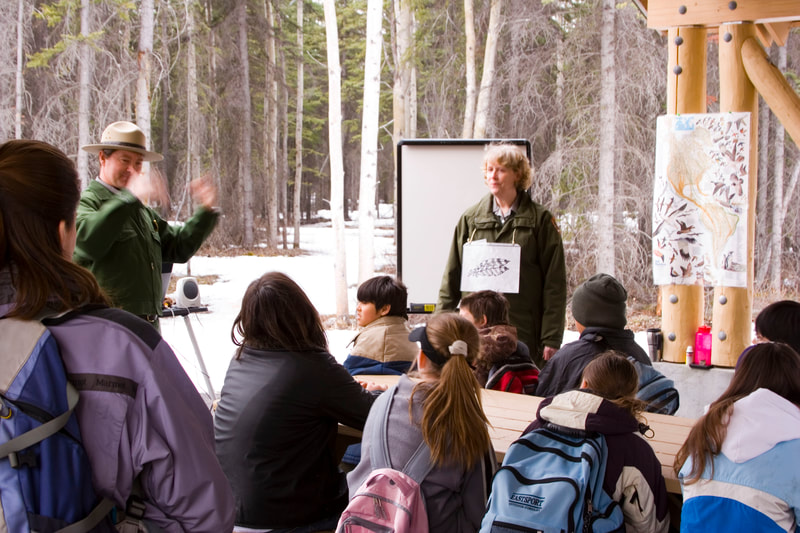
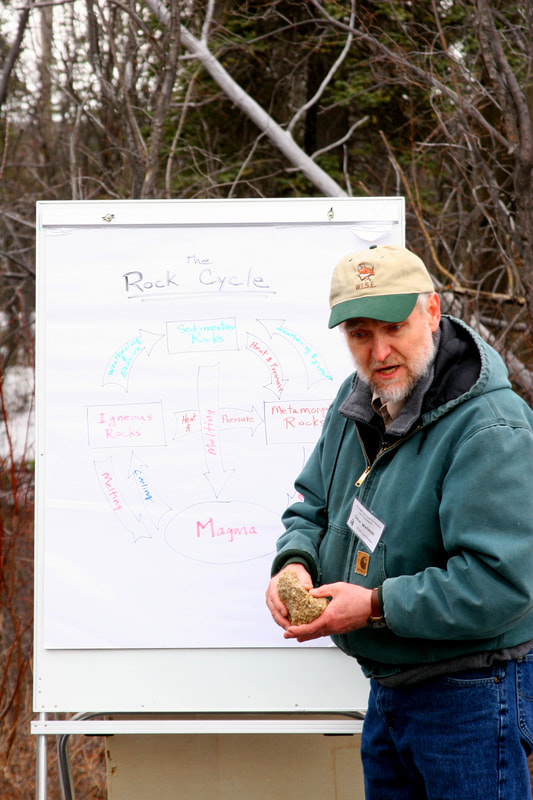
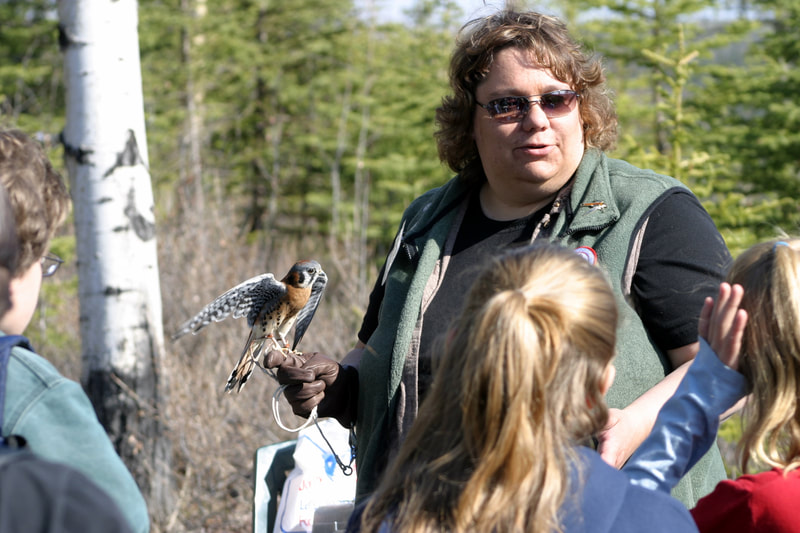
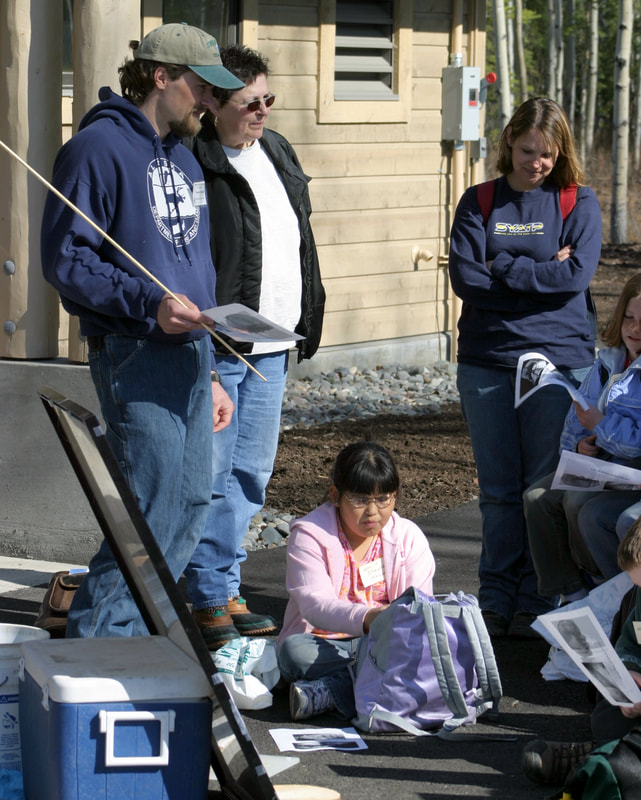
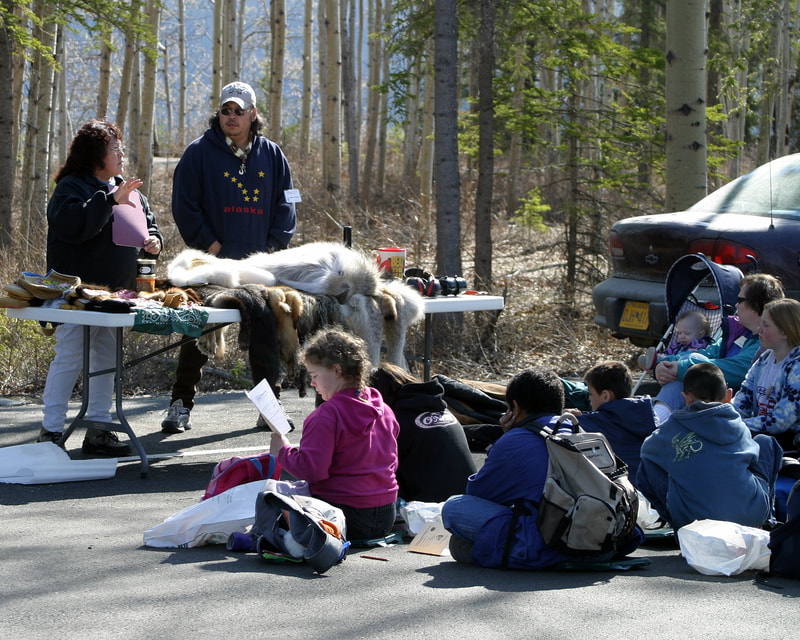
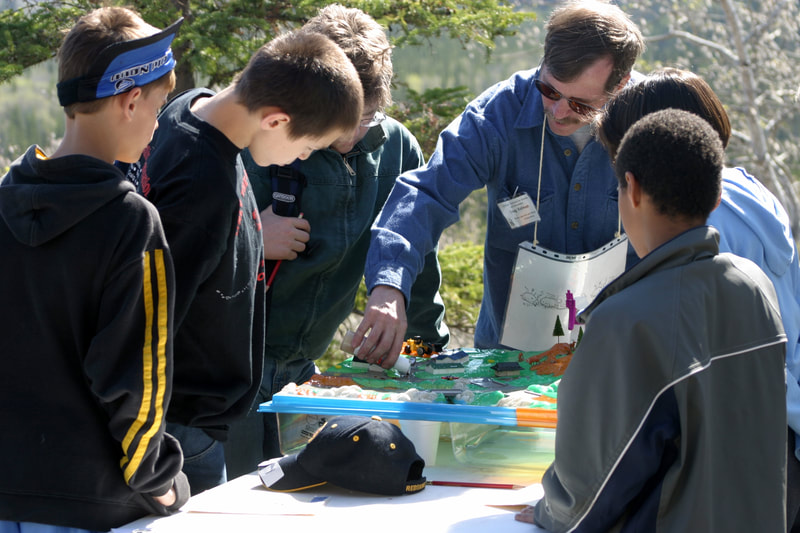
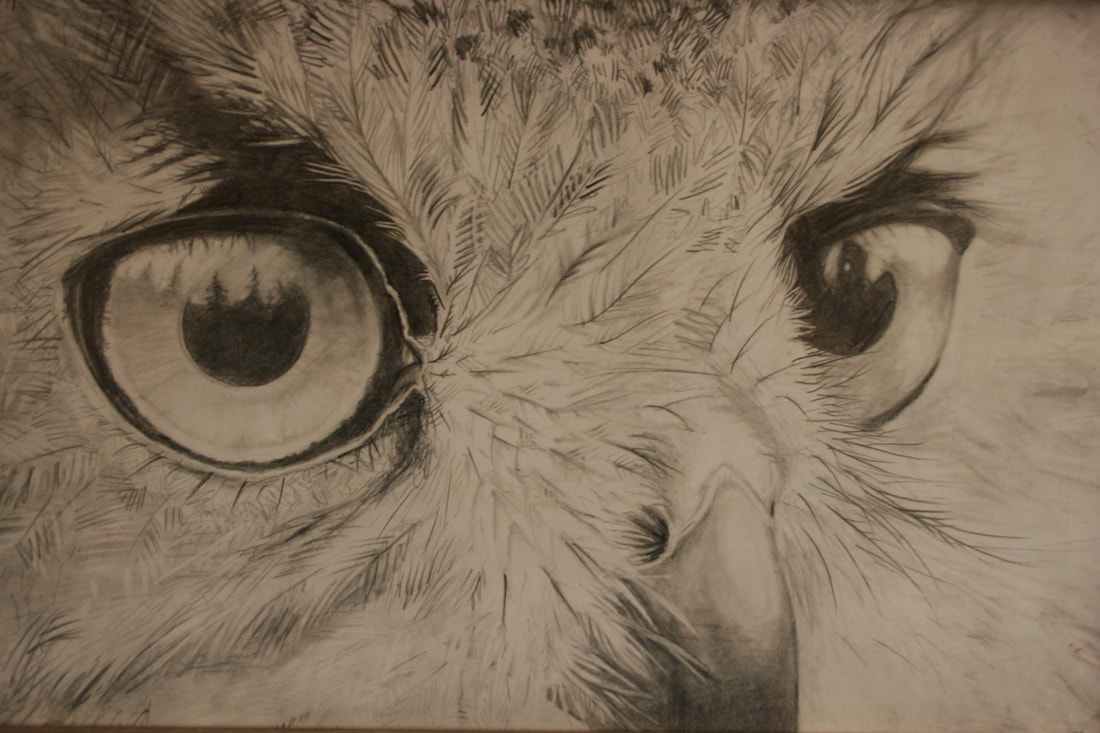
 RSS Feed
RSS Feed
